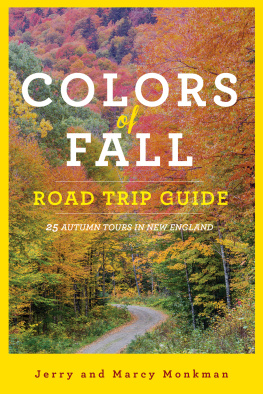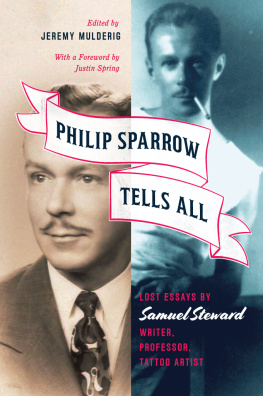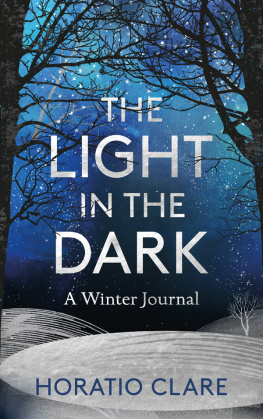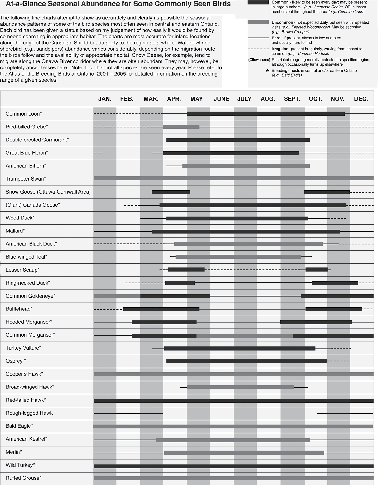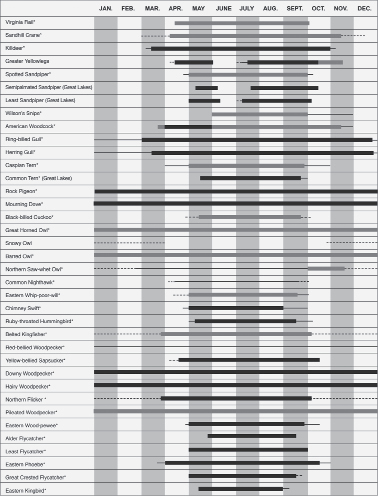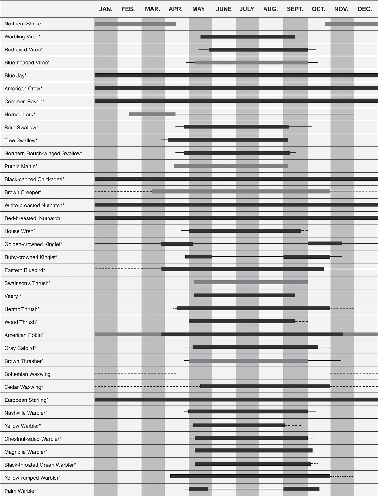Acknowledgements
A book of this sort would never have been possible without the assistance of a great many people. I am especially grateful, however, to the late Doug Sadler, a Peterborough naturalist, writer, and educator, who in many ways was my mentor and who helped me to look at the natural world in a way that filled me with wonder and tantalizing questions to ponder.
I also wish to extend my sincere thanks to Kim Caldwell and Jean-Paul Efford, whose superb drawings illustrate the chapters of this book. I am also very grateful to have been able to use the excellent photographs of Terry Carpenter, Harold Clark (author photo), Joe Crowley, Karl Egressy, Matthew Garvin, Rick Stankiewicz, Tyler Wheeldon, and the Ontario Ministry of Natural Resources. Thanks also are extended to Allison Hirst, senior editor at Dundurn, for her expertise and patience in editing the manuscript, and to Jeff Macklin, a graphic designer at Jackson Creek Press, for all his hard work in preparing the maps and bird abundance charts.
The accuracy and completeness of the book was also greatly enhanced by the following individuals who gave generously of their time to review sections of the manuscript and to share their expertise. They include a number of people from Trent University, Parks Canada, the Natural Heritage Information Centre (NHIC), and the Ontario Ministry of Natural Resources (OMNR).
Thanks are extended to Peter Adams (Trent University), Jerry Ball, David Beresford (Trent University), Bob Bergmann (OMNR), Tony Bigg, David Bland (Parks Canada), John Bottomley, Peter Burke, Bill Crins (OMNR), Paul Elliott (Trent University), Jason Hollinger, Steve Kerr (OMNR), Peter Lafleur (Trent University), Janine McLeod (Alderville First Nation Black Oak Savanna), Mike McMurtry (NHIC), Brian Morin (Parks Canada), Erica Nol (Trent University), Mike Oldham (NHIC), Kathy Parker, Martin Parker, Chris Risley (OMNR), Rick Rosatte (Trent University/OMNR), Rick Stankiewicz, Don Sutherland (NHIC), and Brad White (Trent University).
While many have been supportive of this workand no one more so than my wife, Michellethe responsibility for any errors remains with me. Any such that are reported to the publisher or I will be rectified in subsequent editions.
To be interested in the changing seasons is a happier state of mind
than to be hopelessly in love with spring.
George Santayana
Appendix 2
Where to Go
A s Doug Sadler says in Our Heritage of Birds , Birds are where you find them. In other words, interesting sightings of our flora and fauna can be had just about anywhere even in your own backyard. The following locations, however, are well-known in the naturalist community as offering a particularly rich assortment of flora and fauna. They are listed by region and by their proximity to one another. Please refer to the map on page 309, or for more detailed information, highlights, and a list of amenities, I recommend visiting each locations website. Several of the sites listed are nature reserves owned by Ontario Nature. They are all open to visitors.
Grey-Bruce
1. Bruce Trail: Follows the Georgian Bay shoreline and the top of the Niagara Escarpment from Collingwood west to Owen Sound and north to Tobermory. Highlights : Most spectacular views in central and southern Ontario; diverse geological formations; fascinating flora, including rare and abundant ferns; huge diversity of breeding birds.
2. Bruce Peninsula National Park: Located south of Tobermory at the tip of the Bruce Peninsula. Highlights : White dolomite cliffs of the Niagara Escarpment and the aquamarine waters of Georgian Bay make for spectacular scenery; ancient cedars and northern nesting birds; Dorcas Bay (Singing Sands) on Lake Huron shoreline has wetlands (fens) that are home to many types of orchids and insectivorous plants, Atlantic coastal species, and Great Lake endemics; massasauga rattlesnake; dark skies for astronomy; excellent visitor centre.
3. Fathom Five National Marine Park: Made up of the islands and surrounding waters off the tip of the Bruce Peninsula at Tobermory. Highlights : Iconic rock formations of Flower Pot Island; abundant eastern garter snakes; rare ferns and orchids.
4. Cabot Head: Located on the northeast tip of the Bruce, take road from Dyers Bay to Cabot Head lighthouse. Highlights : Designated as an Important Bird Area; concentrates migrating songbirds and water birds (e.g., Red-necked and Horned Grebes, loons, diving ducks) in spring; spring raptor migration passes over this area; home of the Bruce Peninsula Bird Observatory; spectacular scenery.
5. Fishing Islands: A string of islands that border the western shore of the peninsula from the north end of Sauble Beach to Stokes Bay. Access is by boat. Highlights : Large variety of colonial nesting birds; characteristic fen plants of the Bruce Peninsula.
6. Black Creek Provincial Park: From Highway 6 at Ferndale, take Burma Road West and turn right onto Stokes Bay Road. Travel north to Myles Bay Road. Turn left and then right onto Sandy Bay Road. Highlights : Nesting Olive-sided Flycatcher and wood warblers such as Northern Parula; Stokes Bay is a resting and feeding area for diving ducks.
7. Petrel Point Nature Reserve (Ontario Nature): From Highway 6, north of Wiarton, take Red Bay Road west and then Huron Road north to Petrel Point Road. Highlights : Rich mosaic of fen and cedar swamps containing abundant orchids, pitcher plants, sundews, grass-of-parnassus, tuberous Indian-plantain, etc.
8. Georgian Bay Shoreline (Dyers Bay Cape Chin Lions Head Hope Bay): Follow 40 Hills Road from just north of Wiarton along Georgian Bay shoreline. (Road changes names several times.) Provincial nature reserves at Lions Head and Hope Bay. Highlights : Access to the Georgian Bay shoreline and the spectacular cliffs and bluffs of the Niagara Escarpment; Bruce Trail provides walking access to many spectacular sites; diverse ferns.
9. Ferndale Flats: Made up of the pasturelands surrounding the hamlet of Ferndale on Highway 6. Highlights : Grassland birds, most notably western species such as Brewers Blackbird and sometimes Western Meadowlark; flocks of Sandhill Cranes in fall; Snowy Owls and Rough-legged Hawks in winter.
10. Sky, Boat, and Isaac Lakes: Chain of three lakes located west of Wiarton. Highlights : Extensive breeding populations of wetland birds, including bitterns, Black Terns, rails, waterfowl, and Marsh Wrens.
11. Chantry Island: Located in Lake Huron off the town of Southampton on Highway 21 access by boat. Highlights : A very significant bird sanctuary due to its diversity of colonial nesting birds, including Great Egret, Black-crowned Night-heron, and Great Black-backed Gull; large numbers of migrating diving ducks each spring and fall.
12. MacGregor Point Provincial Park: Located south of Port Elgin on Highway 21 on Lake Huron shoreline. Follow the signs. Highlights : Located on the Huron Fringe, some of the richest biodiversity in Ontario with coastal dunes, bluffs, cobble shore, and a wide variety of wetland types and associated flora such as the rare dwarf lake iris; migrating birds; salamander viewing in early spring; Huron Fringe Birding Festival (late Mayearly June) offers numerous activities to learn about all aspects of nature.


